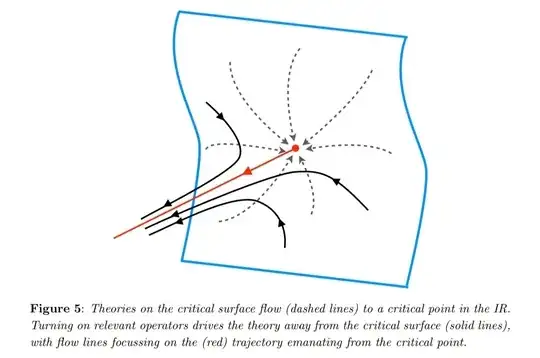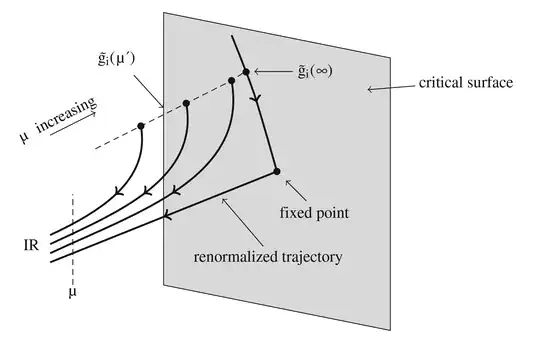I am trying to understand renormalization in Wilson approach.
There's cool picture, which demonstrates flow of theories in IR:
So, if one interested in UV limit, one need reverse flow and flow in this reverse direction.
As it clear from picture, this procedure can be done only for red line. Dashed or solid line will lead us in UV to infinite values of couplings.
But in 6 Lectures on QFT, RG and SUSY there's the picture, which illustrate continuous limit:
As I understand, the idea is in construction on some lines of theories, that will lead to finite couplings values on infinite energy scale.
But this looks incorrect, because in finite scale $\mu$ these theories have different IR limits.
So, I don't understand, how to take continuous limit, if effective theory doesn't lie on renormalized trajectory?

